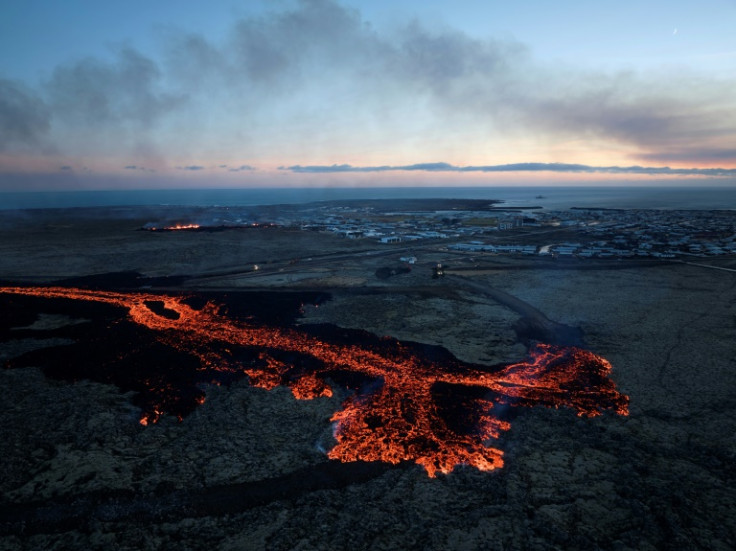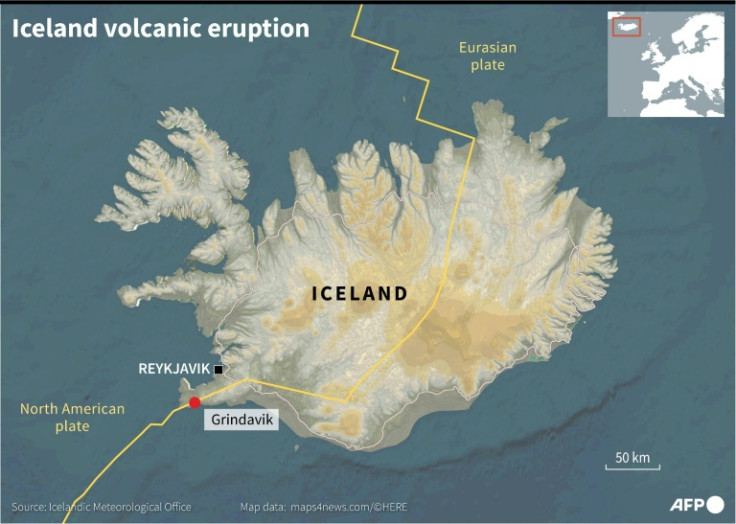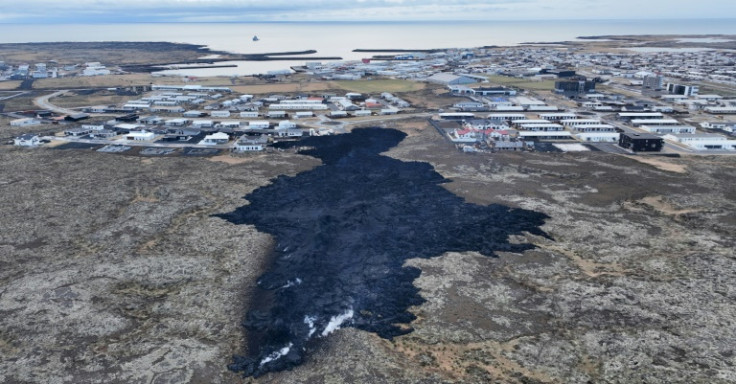Icelanders See Little Chance Of Return After Volcano Destroys Homes

Icelanders forced from their town by a dramatic volcanic eruption face never returning home, after lava engulfed several homes in the town, something the island nation had not seen in five decades.
On Sunday, a volcanic fissure opened up in a field near the fishing town of Grindavik -- which had been hastily evacuated just hours earlier.
A second crack opened around midday right on the edge of town, sending orange lava flowing into the streets and reducing three homes to ashes.
"Everyone is tired of the stress that comes with not knowing when you can go to your home and how safe it is going to be," Grindavik native Erla Osk Petursdottir, 43, told AFP.
On Wednesday, the Icelandic Meteorological Office (IMO) said there were no longer any visible signs of the eruption but noted that "magma accumulation" continued in the area and the level of danger for Grindavik remained "very high".
"There is a continued likelihood that new eruption fissures may open without warning," it said.
"We don't know how long this will last but it could be years and it is possible that lava will engulf the town," Magnus Tumi Gudmundsson, professor of geophysics at the University of Iceland, told AFP.
On Tuesday, Gudmundsson faced questions from 500 evacuated residents who had gathered in the capital Reykjavik to discuss the future of their town, which was once home to 4,000 people.
In a signal of the importance afforded to the issue, Prime Minister Katrin Jakobsdottir and Finance Minister Thordis Kolbrun Reykfjord Gylfadottir also attended the meeting.
"The biggest issue for the people is that they have been displaced. They cannot access their homes," Gudmundsson said.
"Their work may not exist any more because they worked in town. And they have seen a very steep rise in their costs and this is a big issue," he added.
In 1973, locals on Heimaey island were woken from their beds at dawn to a fissure erupting just 150 metres (164 yards) from the town centre.
On an island where there had been no eruption for nearly 6,000 years, a third of homes were destroyed and the 5,300 residents were evacuated. One person died.
Over time, the Heimaey community returned, but Grindavik's future has been shrouded in uncertainty for the last two months.
On November 11, Grindavik was evacuated after hundreds of earthquakes damaged buildings and opened up huge cracks in roads.
The seismic activity was triggered by the displacement of magma beneath the Earth's crust, seen as a precursor to a volcanic eruption.
On December 18, a volcano erupted three kilometres (1.8 miles) from the town.
Residents were able to return to their homes briefly several days later, and then for good on December 23, although only a few dozen chose to do so.
Those who had returned had to be hastily evacuated again on Saturday night when it became clear another eruption was imminent.
Stunned by the destruction in their town, many families now find themselves struggling financially.
They are required to continue mortgage payments for their homes, as well as pay rent for temporary lodgings elsewhere unless they are able to stay for free with relatives.
Some 200 families are in urgent need of housing, Grindavik's mayor told Tuesday's meeting.
"We need to prepare for the long term," Petursdottir said, explaining that most inhabitants were resigned to the prospect of not returning.
Their priorities are to live in safety and with stable finances, she added.
Residents have also asked the government to buy their homes in Grindavik, even if they might need to buy them back at a later date -- which is currently only a hypothetical prospect.
"We are stuck," 44-year-old real estate agent Pall Thorbjornsson told AFP, insisting it was currently up to the government to find a solution.
Some measures have already been introduced.
Temporary financial aid has been granted to residents since November and the government has ordered the purchase of more than 200 homes for rehousing.
At the same time, everyone is dealing with the sadness of leaving their homes and the break-up of their community.
"We're scattered all over now and we crave nothing more than to get back together," Petursdottir said.
But Thorbjornsson remained hopeful.
"We need to give ourselves a little bit of time," he said.
"I cannot do anything. There's the government and then Mother Nature."
The Grindavik eruption was Iceland's fifth volcanic eruption in under three years.
Iceland is home to 33 active volcano systems, the highest number in Europe.
It straddles the Mid-Atlantic Ridge, a crack in the ocean floor separating the Eurasian and North American tectonic plates.


© Copyright AFP 2025. All rights reserved.





















